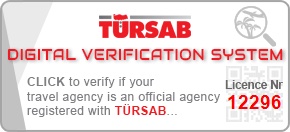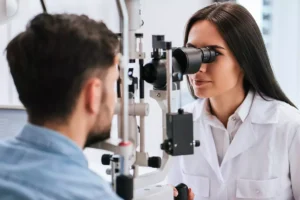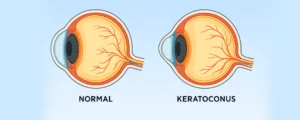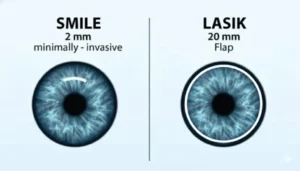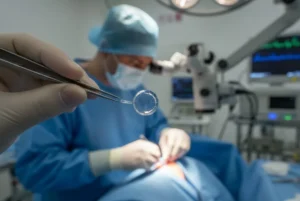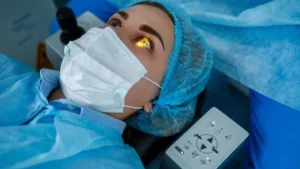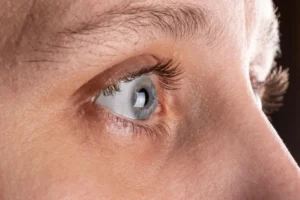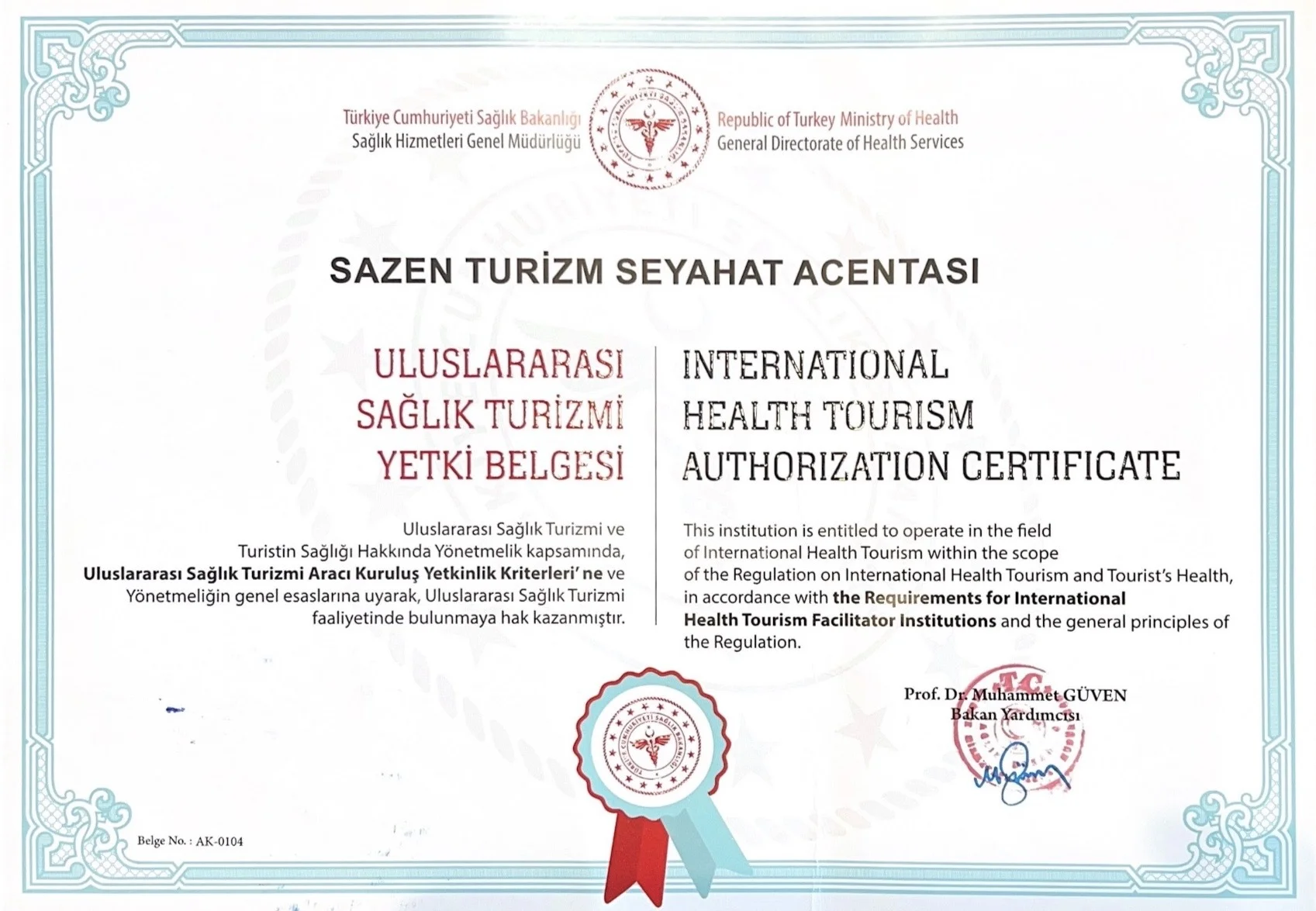Strabismus, commonly known as a squint or cross-eye, is a condition where the eyes do not align properly, looking in different directions. This misalignment can lead to double vision, reduced depth perception, and significant cosmetic concerns, affecting an individual’s confidence and daily life. While it is often perceived as a childhood condition, strabismus can affect adults too, either persisting from childhood or developing later in life due to various factors. For many, strabismus surgery in Turkey represents a definitive and highly effective solution, offering not only clinical improvement but also a renewed sense of self-assurance.
Turkey has emerged as a leading destination for medical tourism, particularly for ophthalmic procedures. Patients from the United Kingdom and across Europe are increasingly choosing Turkey for complex and routine medical interventions, drawn by the combination of high-quality care, experienced specialists, and significantly more accessible pricing. This article delves into the specifics of strabismus surgery, highlighting why Turkey stands out as a premier choice for this delicate eye operation.
Understanding Strabismus: Causes and Impact
Strabismus is characterized by a deviation in eye alignment, where one eye may turn inward (esotropia), outward (exotropia), upward (hypertropia), or downward (hypotropia). This condition arises from an imbalance in the extraocular muscles that control eye movement, or from neurological issues affecting these muscles. Genetic predisposition, refractive errors, certain medical conditions, and trauma can all contribute to its development.
Beyond the noticeable cosmetic aspect, strabismus can have profound functional consequences. The brain, attempting to avoid double vision, may suppress the image from the misaligned eye, leading to amblyopia (lazy eye) if not treated early, especially in children. In adults, sudden onset strabismus often results in persistent double vision (diplopia), which can be debilitating and impact tasks such as driving, reading, and spatial navigation. Timely intervention, particularly an effective strabismus operation, is crucial for both visual function and psychological well-being.
The Strabismus Operation: Restoring Ocular Alignment
Strabismus surgery, often referred to as cross eyed surgery or squint surgery, is a procedure designed to correct the misalignment of the eyes. The surgery works by adjusting the length or position of the eye muscles to realign the eyes and improve their coordinated movement. It is a precise intervention performed by highly skilled ophthalmic surgeons.
Types of Strabismus and Surgical Approach
The specific surgical technique employed depends on the type and severity of strabismus. The most common types include:
- Esotropia: Eyes turn inward. Surgery often involves weakening the medial rectus muscles or strengthening the lateral rectus muscles.
- Exotropia: Eyes turn outward. This typically involves weakening the lateral rectus muscles or strengthening the medial rectus muscles.
- Hypertropia/Hypotropia: Eyes turn upward or downward. Surgery targets the superior or inferior rectus muscles, or oblique muscles.
The goal is always to achieve better ocular alignment, improve binocular vision, and enhance the cosmetic appearance of the eyes.
Surgical Techniques Employed
The fundamental techniques in strabismus surgery include:
- Recession: This involves detaching an eye muscle from its original insertion point and reattaching it further back on the eyeball. This effectively weakens the muscle’s pulling action, allowing the eye to move in the opposite direction.
- Resection: In this technique, a section of an eye muscle is removed, and the muscle is then reattached at its original insertion point. This shortens the muscle, thereby strengthening its pulling action.
- Adjustable Sutures: In some adult cases, surgeons may use adjustable sutures. This allows for minor adjustments to the eye alignment in the post-operative period, often within the first 24 hours, while the patient is awake. This fine-tuning can lead to more precise outcomes.
The eye operation for squint is typically performed under general anesthesia, particularly for children, or local anesthesia with sedation for adults. The surgeon makes a small incision in the conjunctiva (the clear membrane covering the white of the eye) to access the eye muscles, leaving no visible external scar.
Why Turkey is a Premier Choice for Strabismus Surgery
Turkey’s reputation in medical tourism is well-earned, offering a compelling blend of affordability, advanced medical infrastructure, and patient-centric services. For complex procedures like strabismus surgery, the advantages are particularly evident.
Cost-Effectiveness Without Compromise
One of the most significant draws for international patients is the substantial cost savings. Strabismus surgery in Turkey is often a fraction of the price compared to countries like the United Kingdom, without any compromise on the quality of care or the expertise of the medical professionals.
| Service/Item | Turkey Price | United Kingdom Price |
|---|---|---|
| Strabismus Surgery | £1,800 – £3,500 | £4,000 – £8,000 |
| Initial Consultation | £50 – £100 | £200 – £400 |
| Post-Op Follow-up | Included | £100 – £250 |
| Diagnostic Tests | Included | £300 – £600 |
*Prices are estimates and can vary based on clinic, surgeon, and specific case complexity.
Advanced Facilities and Expert Surgeons
Turkish hospitals and clinics are equipped with state-of-the-art technology, adhering to international standards of medical care. The ophthalmic surgeons are highly trained, often having received education and training in leading institutions worldwide. They possess extensive experience in performing intricate eye operation for squint on both children and adults, ensuring optimal outcomes.
Accessibility and Patient Support
Turkey is easily accessible from the UK, with numerous direct flights. Medical tourism facilitators, like CK Health Turkey, provide comprehensive support, managing everything from initial consultations to travel arrangements, accommodation, and post-operative care. This holistic approach makes the medical journey seamless and stress-free for international patients.
The Surgical Process and Recovery
Embarking on cross eyed surgery involves several key stages, each designed to ensure patient safety and the best possible outcome.
Pre-operative Assessment
Before surgery, a thorough ophthalmic examination is conducted. This includes:
- Comprehensive Eye Exam: Assessing visual acuity, refractive errors, and the extent of strabismus.
- Orthoptic Evaluation: Detailed measurements of eye deviation in various gaze positions to determine which muscles need adjustment.
- General Health Check: To ensure the patient is fit for anesthesia and surgery.
- Discussion: The surgeon discusses the procedure, potential risks, expected outcomes, and answers any patient questions.
The Procedure
On the day of the strabismus operation, the patient is admitted to the clinic. Anesthesia is administered. The surgeon then carefully accesses the target eye muscles, performing the necessary recession or resection to correct the alignment. The small incisions are closed with dissolvable sutures, and an eye patch may be applied for protection.
Post-operative Care and Recovery
Recovery from squint surgery is typically straightforward, though individual experiences may vary. Immediately after the procedure, patients may experience some discomfort, redness, and mild swelling of the eye. Vision might be blurry initially, but this usually subsides quickly.
Recovery Timeline
- Day 1-3: The eyes will be red and may feel gritty. Mild pain or discomfort is common and can be managed with prescribed pain medication. Patients should avoid rubbing their eyes and adhere strictly to antibiotic and anti-inflammatory eye drops.
- Week 1: Redness and swelling gradually decrease. Patients can typically resume light activities, but strenuous exercise, swimming, and heavy lifting should be avoided. Follow-up appointments are crucial to monitor healing and assess initial alignment. A study published in the Journal of American Association for Pediatric Ophthalmology and Strabismus found that in a significant percentage of patients undergoing strabismus surgery, initial post-operative alignment can predict long-term success, emphasizing the importance of early follow-up and precise surgical planning.
- Month 1: Most of the redness and swelling will have resolved. Patients can usually return to all normal activities. The full visual and cosmetic results of cross eye surgery before and after become more apparent, though minor adjustments in eye position can continue over several months.
- Beyond 3 Months: Final alignment is typically stable. Regular follow-up with an ophthalmologist is recommended to monitor long-term outcomes, especially for children who may require ongoing vision therapy or, in rare cases, a second surgery for optimal correction.
Patients are advised to wear sunglasses outdoors to protect their eyes from bright light and wind during the initial recovery period.
Comparison: Strabismus Surgery in Turkey vs. the UK
When considering strabismus surgery in Turkey, it is beneficial to weigh the factors against options available in the United Kingdom.
| Factor | Turkey | United Kingdom |
|---|---|---|
| Cost | Significantly lower (2-4x less) | High, often a barrier for private treatment |
| Waiting Times | Minimal, often immediate scheduling | Can be lengthy on the NHS, varying for private |
| Surgeon Experience | Highly experienced, often internationally trained | Highly experienced, but demand can be high |
| Technology | Modern, state-of-the-art facilities | Modern, but may have older equipment in some areas |
| Patient Support | Comprehensive medical tourism services | Standard hospital care, less dedicated support |
| Travel | Requires international travel and accommodation | Local, easier logistics, but potentially longer travel within UK |
| Recovery Environment | Opportunity for recuperation in a pleasant climate (Antalya Climate: Optimal Seasons for Medical Travel) | Familiar home environment |
This comparison highlights the compelling advantages Turkey offers, particularly in terms of cost, accessibility, and integrated patient care.
CK Health Turkey: Your Partner for Ophthalmic Care
At CK Health Turkey, we are committed to providing world-class ophthalmic care for international patients seeking strabismus surgery in Turkey. Our network of highly reputable clinics and experienced surgeons specializes in a wide range of eye treatments, including advanced vision correction such as Laser Eye Surgery, as well as complex procedures like Cataract Surgery in Turkey. We understand the nuances of medical travel and are dedicated to ensuring a seamless and comfortable experience from your initial inquiry to your full recovery.
We pride ourselves on our patient-centric approach, offering transparent pricing, personalized treatment plans, and comprehensive support services that cover every aspect of your medical journey. Our team ensures that you receive the highest standard of care, utilizing cutting-edge technology and proven surgical techniques for optimal results. If you are considering an eye operation for squint or other eye conditions, trust CK Health Turkey to connect you with leading specialists and provide an unparalleled medical tourism experience.
Contact CK Health Turkey today for a confidential consultation or to learn more about how we can facilitate your strabismus surgery journey. Visit our website to explore our services and start your path to clearer, better-aligned vision.
For many individuals affected by strabismus, the prospect of improved vision, enhanced appearance, and renewed confidence is invaluable. Turkey offers a robust and attractive option for strabismus operation, combining expert surgical teams, modern facilities, and significant cost advantages over many Western nations. Patients can expect a high standard of care throughout their journey, from pre-operative assessments to meticulous post-operative follow-ups. The decision to pursue surgery abroad is a significant one, but with comprehensive support and access to leading specialists, Turkey provides a viable and highly beneficial pathway to effective strabismus correction. The long-term benefits of correcting eye misalignment extend beyond improved sight, fostering greater self-esteem and a better quality of life. Choosing a reputable provider in Turkey ensures that this life-changing procedure is not only accessible but also delivered with the utmost professionalism and care.
FAQs
What is strabismus surgery?
Strabismus surgery is a procedure that adjusts the length or position of the eye muscles to correct misaligned eyes, commonly known as squint or cross-eye. It aims to improve eye alignment, binocular vision, and cosmetic appearance.
Is strabismus surgery painful?
The surgery itself is performed under anesthesia, so you will not feel pain during the procedure. Post-operatively, you may experience mild discomfort, grittiness, or a feeling of pressure in the eye, which can be managed with prescribed pain relievers and eye drops.
How long does recovery take for strabismus surgery?
Initial recovery, including redness and swelling, typically lasts 1-2 weeks. Most patients can return to normal light activities within a week and full activities within a month. Complete healing and final alignment can take several months.
Will I need glasses after strabismus surgery?
Strabismus surgery corrects eye alignment, not necessarily refractive errors. If you had glasses for nearsightedness, farsightedness, or astigmatism before surgery, you will likely still need them. The surgery may improve your binocular vision, but it is distinct from vision correction procedures like laser eye surgery.
Are there any risks associated with the `strabismus operation`?
As with any surgery, there are potential risks, though they are generally low. These can include overcorrection or undercorrection, infection, bleeding, double vision (temporary or persistent), or, very rarely, vision loss. Your surgeon will discuss all potential risks with you.
How successful is `squint surgery`?
Strabismus surgery is highly successful in improving eye alignment and vision for most patients. The success rate can vary depending on the type and complexity of the strabismus, as well as the patient’s age and overall eye health. In some cases, a second surgery may be required to achieve optimal results.
What is the difference between `cross eyed surgery` for children and adults?
The fundamental surgical techniques are similar. However, children are often operated on under general anesthesia, and early intervention is crucial to prevent amblyopia. Adults may have options like adjustable sutures and generally recover from double vision more slowly if it was present before surgery.
What should I expect `cross eye surgery before and after`?
Before surgery, your eyes will be misaligned, possibly causing double vision or cosmetic concerns. After surgery, you should expect significantly improved eye alignment, reduction or elimination of double vision, and a more symmetrical appearance. There will be redness and swelling initially, which subsides over weeks.
Why choose Turkey for `eye operation for squint`?
Turkey offers a compelling combination of experienced ophthalmic surgeons, modern medical facilities, significantly lower costs compared to the UK, and comprehensive patient support services, making it an attractive destination for medical tourists seeking high-quality care.
Can I combine my `strabismus surgery in Turkey` with a holiday?
Many patients choose to combine their medical trip with a short holiday due to Turkey’s attractive tourist destinations. It’s important to consult with your surgeon regarding appropriate timing for sightseeing and strenuous activities during your recovery period to ensure your safety and optimal surgical outcome.
